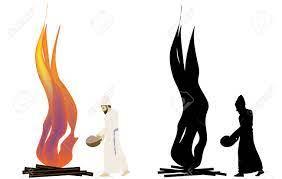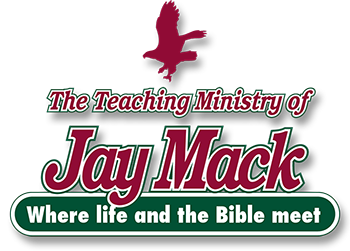The Tamid Offering
28: 1-8
The tamid offering DIG: Describe the daily continual offerings? What feelings do you think the tamid offerings were meant to evoke from the Israelites? How did their twice-a-day regularity help to maintain fellowship with God? What picture do the tamid offerings paint? Who were the Standing Men? How is the continual burnt offering related to the traditional Jewish prayers? How is it related to the times of prayer?
REFLECT: How is the life of a believer a continual tamid offering (except we are living sacrifices, not dead ones)? What serves as a daily reminder of what ADONAI has done for you? How does this strengthen your relationship with God? What are you thankful for today? Take a moment and consider the goodness of God in your life. What can you do to express your gratitude to Him for His goodness? Who can you pray for?
Obedient people bring pleasure to ADONAI.
Numbers 28 and 29 is an ancient priestly calendar, a detailed list of the prescribed Tabernacle/Temple sacrifices for each festival day. Those festivals are referred to as moedim, or appointed times. They are God’s appointed times for meeting with His holy ones. They are also appointed times for sacrifice. We encountered the biblical calendar in Leviticus 23 (see the commentary on Leviticus, to see link click Dw – God’s Appointed Times), but the book of Numbers also contains a version of the biblical calendar. It, however, is far more detailed regarding the sacrificial offerings for the festival days. Whereas the calendar in Leviticus would say: you shall present an offering ADONAI for each of the festivals, the calendar in Numbers offers the specific details. It spells out exactly what that offering by fire is supposed to be for each festival. It was a calendar intended for the priesthood to study, memorize and implement.
Since there is no Temple today, the mitzvot of Numbers 28 and 29 are not actually applicable today. They are a list of sacrifices and it was, and is, forbidden to make a sacrifice outside of God’s Temple (see Leviticus Da – The Life is in the Blood). Since many Messianic Jews and Gentiles still keep the Lord’s appointed times, no sacrifice can be made without the Temple. Yet, there is always merit in studying the Torah. We must view the appointed times as a shadow of things to come and the substance of the Messiah. So don’t let anyone pass judgment on you in connection with eating and drinking, or in regard to a Jewish festival or a New Moon festival. These are a shadow of things that are coming, but the body is of the Messiah (Col 2:16-17).633
The Tamid (Hebrew: continual) offering was a regular daily feature in the Tabernacle or Temple service. It was, in fact, an offering of two halves. A prominent feature is how this korban was both the first and the last offering in the daily sacrificial schedule. Everything in life has its parameters of two points: a beginning and an end. God is the start of everything, and history will come full circle at last days when He reveals Himself and His glory to the universe.634
ADONAI instructed Moshe, saying: Give an order to the people of Isra’el. Tell them, “You shall be careful to present My offering, My food for My offerings by fire, of a fragrant aroma to Me at their appointed time” (28:1-3a). Here, the LORD refers to the sacrifices with three different terms: First, He calls them My offering (Hebrew: korban, meaning something brought near). These were offerings brought by the priesthood on behalf of the entire nation. They were meant to symbolize all Isra’el drawing near to the Presence of God.
The second term the Ruach Ha’Kodesh uses to refer to the sacrifices is My food (Hebrew: lechem, meaning bread) for My offerings by fire. The altar is sometimes described as a table, and the sacrifices placed upon it are described as food. The priesthood is said to present offerings by fire to ADONAI, the food of their God (Leviticus 21:6). When this kind of metaphoric language is used, we should be careful lest we imagine that God actually eats the sacrifices or requires them. In the Psalms, He declares: If I were hungry I would not tell you, for the world is Mine, and all it contains. Shall I eat the flesh of bulls or drink the blood of male goats (Psalm 50:12-13). The sacrifices are the food of God only on a metaphoric level. They symbolize the table of fellowship between YHVH and Isra’el. The LORD’s portion of the meal, as it were, was consumed in the flames of the bronze altar. In a similar manner, the Master refers to bread as His body and wine to His blood. He bids His disciples to eat of Him. But these are metaphors, meant to be understood symbolically.
The third term He uses to refer to the sacrifices is a fragrant aroma. The fragrant aroma was the smell of the fire upon the bronze altar. It represents the final stage of the worship experience, where the sacrifice was converted into heat and smoke rising up to God. The sacrifices offered something for each of our five senses. The Israelites smelled them and the incense, they tasted the sacrificial meats and breads, they saw the splendor of the Tabernacle/Temple courtyard and priestly clothing, they heard the songs of the Levitical choir, and they laid their hands of the head of the sacrifice, transferring their sin to the sacrifice itself.635

The concept of the appointed time (28:2c and 8): Surprisingly, the first appointed time mentioned is not a festival or a Sabbath day. Rather it is the daily appointed times for offering the tamid. Offerings were part of the rhythm of worship. Each morning a one-year-old male lamb without defect was sacrificed as a regular burnt offering (see the commentary on Leviticus Ai – The Burnt Offering: Accepted by God). One lamb was offered at sunrise to make atonement for the sins of the night and the other lamb was offered at sunset (Hebrew: ha’arbayim, traditionally understood to mean mid-afternoon) to make atonement for the sins of the day. In Temple times, the “sunset” sacrifice was made during the ninth hour of the day (2 to 3pm). This second sacrifice was referred to as the minchah.636 The tamid parallels the Shema which is itself recited twice daily – in the beginning of the day and once again in the evening – with its affirmation of God’s heavenly kingship (see the commentary on Deuteronomy Bw – Shemah Isra’el). Similarly, it is how the we pledge to serve ADONAI our God with all our heart, soul, and mind (Matthew 22:37).637
During the sacrifice of those two lambs, prayers were offered. During the Second Temple era, the daily prayer of the Amadah was offered by the priesthood and the attending worshippers in conjunction with those two sacrifices. From biblical times, the morning and afternoon sacrifices came to be regarded as the established times of prayer. Acts 3:1 and 10:3 make reference to the times of the daily tamid sacrifices, explicitly identifying it as the time of prayer.638
However, the sunrise offering and the sunset offering are not the only revelations of godliness. But also all during the day, the presence of God must be felt so that the middle, as well as the beginning and the end, are united as one. The tamid is characterized as a continual, constant, or always sacrifice. For us, this means being conformed to the likeness of Messiah (Romans 8:29b), our constant spiritual growth, throughout life. We should focus on ADONAI at the beginning of the day, at the end of the day, and at all during the day. In other words, we faithfully serve Him “from start to finish.”
Dear Heavenly Father, It is such a joy and a privilege to be able to continually walk and to pray to You! Praise You for having Messiah Yeshua open the way for access to You as LORD all during the day and night, every day of the year. Thank you that when Messiah died, You tore the curtain in the Most Holy Place that had previously blocked access to Your Presence. And Yeshua cried out again with a loud voice and gave up His spirit. And behold, the curtain of the Temple was split in two, from top to bottom. And the earth quaked and rocks were split apart (Matthew 27:50-51).
What a privilege that Your Presence is no longer blocked. Now, thanks to Messiah Yeshua’s paying the full price for sin (John 1:29, Second Corinthians 5:21), continual access has been opened to You! Continual access to the King of kings, our Father, is such a prized gift! What joy it is to spend time meditating on how wonderful You are. It is a great comfort to know that in any trial or problem, You are always available for me to cry out to You for Your help (Hebrews 13:6) and wisdom (James 1:5).
Because Messiah lives forever (Isaiah 53:10) continual access to You is always open. Formerly the high priest could only go behind the curtain one day of the year and was prevented from continuing in that office because of death; but now Messiah Yeshua, the perfect High Priest always lives and is continually making intercession, so the door of salvation and prayer always remains open! But he holds his priesthood permanently, because he continues forever. Consequently, he is able to save to the uttermost those who draw near to God through him, since he always lives to make intercession for them (Hebrews 7:24-25). Thank you so much for the very special privilege of having continual access to You from the time that I get up to the time I go to sleep. In Messiah Yeshua’s holy Name. Amen
Both lambs were sacrificed along with two quarts of fine flour as a grain offering, mixed with one quart of oil from pressed olives. It was a regular burnt offering, the same as was offered on Mount Sinai (Exodus 29:38-42) to give a fragrant aroma. In addition, both were sacrificed with a strong drink offering made of beer or whisky (Hebrew: shechar, meaning any kind of intoxicating drink not made from grapes, but made from dates or other fruits) to be poured out by the priests at the base of the bronze altar, one-quarter hin for each lamb. In summary, they were both offerings made by fire, with a fragrant aroma for ADONAI. The ordering of the sacrifices was a fixed element in the ritual of the people. Each day began and ended with a sacrifice; each Sabbath had its special sacrifices (see Ey – The Sabbath Offerings), as did each new month (see Ez – The New Moon Offerings). All time was marked by sacrifice.
The concept of the acceptable offering (28:3 and 5, 8): Just as there was an appointed time, there was also an acceptable offering that was to be presented (Leviticus 22:17-33). Not just any animal, any amount of flour, oil, or drink offering could be used. All was according to pattern. The flour was as important as the sacrifice; the drink offering was as significant as the oil. The sacrifices would not be appropriate if any element was not acceptable or if any element was not in the correct proportion. Again, we miss the point if we try to determine the spiritual significance of each item. The issue is one of obedience to ADONAI.639
The tamid was a national offering. It was paid for from the proceeds of the half-shekel tax (see the commentary on Exodus Eu – The Atonement Money for the Tabernacle). In Temple times, the community nature of the daily tamid sacrifice was taken very seriously. In order that all Isra’el would have some participation in the mitzvah, a system of representation was worked out during the Second Temple era. The sages felt that, since the commandment to offer the daily sacrifice was addressed to all Isra’el, representatives of all Isra’el should be present. This was accomplished through the institution of the “Standing Men.” Those Standing Men were elders selected as representatives from among the twenty-four divisions of Israelites (see the commentary on the Life of David Ev – The Divisions of Priests). They served in the Temple as witnesses to the sacrifices and participants in the prayer services on one-week rotations.640
The concept of a pleasing aroma to ADONAI (28:2b and 6-8b): There is a sense in which these offerings are brought to please God. This was to make sure that there was always a continual pleasing aroma in God’s House. Yet when we reflect on them, we realize that it was not the sacrifice itself that brought Him pleasure. He did not take some sort of heavenly perverse pleasure in the blood of animals and the bleating of lambs (see the commentary on Hebrews Bx – The Insufficiency of the Blood of Bulls and Goats). Then why did God delight in the pleasing aroma? He delighted in it because it was offered as a token of obedience, a symbol of the devotion of the worshippers themselves. Those who brought a sacrifice were those who offered themselves to God. The prophet Micah asked: Does ADONAI take delight in thousands or rams, in ten thousand rivers of oil (Micah 6:7)? No! YHVH says: I delight in chesed (see Ruth Af – The Concept of Chesed) rather than sacrifice, and the knowledge of God rather than burnt offerings (Hosea 6:6).641
The concept of a living Sacrifice (Romans 12:1-2): This concept is not necessarily a distinct teaching in the B’rit Chadashah. It is, however, a clearer statement of that which had always been the major issue in sacrifice from the time of Abel until the atonement of Yeshua (Psalm 40:6-8; Hebrews 10:5-7). Ha’Shem looked first at the one who brought the sacrifice (notice the word order in Genesis 4:4-5), then He looked at the sacrifice that the person brought. But when all was as it should be – the person and the sacrifice – then there was a pleasing aroma that ascended up to the LORD.
The enormity of it all. It is estimated that the yearly offerings at a minimum would include 113 bulls, 32 rams, 1,086 lambs, more than a ton of flour, and a thousand bottles of oil and wine. These numbers suggest that Isra’el would have to become an exceedingly prosperous nation in which agriculture would be especially blessed by the LORD. Therefore, in those required sacrifices, there was considerable promise: God would bless His people in such a manner as to allow them to do all that He demanded.642 And it should not be overlooked that the animals were all males, including lambs, rams, bulls, and goats. And at least as far as the lambs were concerned, for the most part, the number seven is predominant. Seven is, of course, considered the perfect number, symbolic of God’s completion of His creation (see Genesis Ae – The Number Seven).
Messiah, Our Tamid Offering: The tamid offerings were rendered unnecessary by the offering of Yeshua Messiah. The B’rit Chadashah supports this interpretation by describing the sacrifice of our Lord as a pleasing aroma and sacrifice to God (Ephesians 5:2). In Him we have close fellowship with the God of Abraham, Isaac, and Jacob. In Him we smell the pleasing aroma of atonement and praise. The word tamid means continual. We are told in the B’rit Chadashah that Yeshua’s sacrifice was a once-for-all-time sacrifice, or a tamid offering before YHVH (see the commentary on Hebrews Cd – Messiah’s Sacrifice Was Once for All Time). The difference between the tamid sacrifices and Messiah’s sacrifice is that instead of being offered all the time, it is effective all the time.643



Leave A Comment